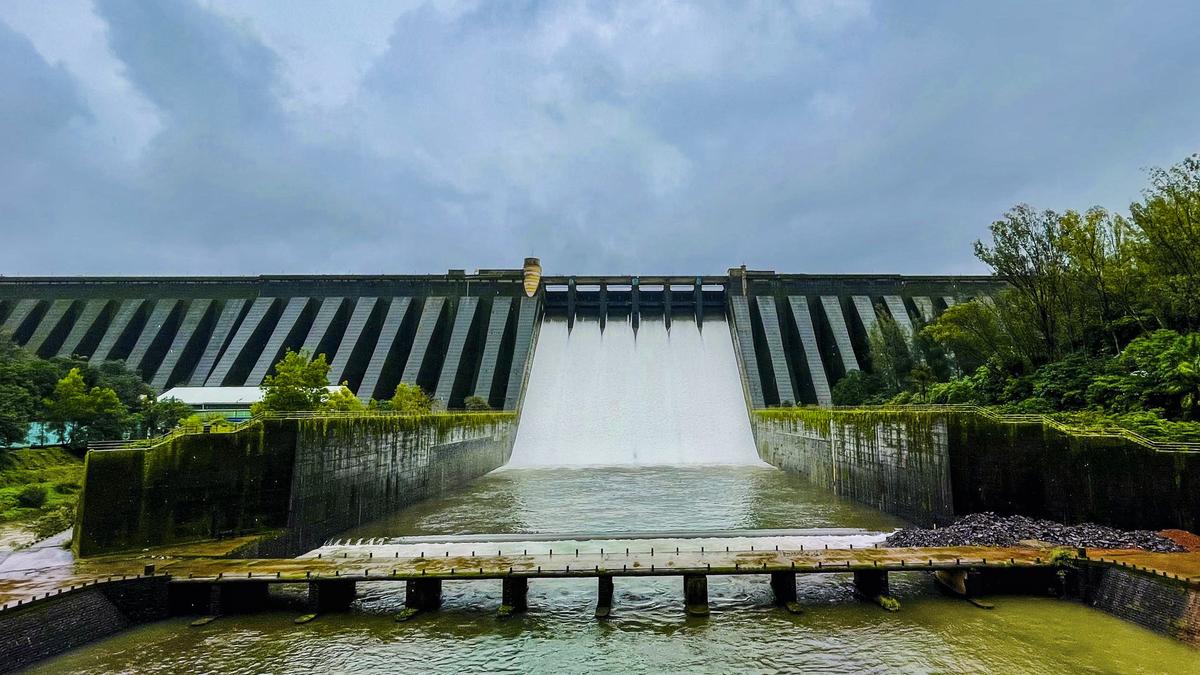Now Reading: Karnataka Rains: Rising Rivers Submerge 8 Bridges
-
01
Karnataka Rains: Rising Rivers Submerge 8 Bridges
Karnataka Rains: Rising Rivers Submerge 8 Bridges

Speedy summary
- Heavy Rainfall Impact: Karnataka authorities issued warnings on rising water levels in Krishna river adn its tributaries after heavy rainfall and increased discharge from Maharashtra.
- Bridge Submergence: Three bridge-cum-barrages in Bagalkot district and five in Belagavi district are submerged, leading to route diversions.
- Almatti Dam Discharge: The dam is releasing 1.5 lakh cusecs (13.5 tmcft) into Krishna river, with inflows expected to rise further beyond the current 88,126 cusecs.
- Koyna Dam Update (Maharashtra):
– Total outflow planned at 53,300 cusecs (including power house release).
– six spillway gates opened due to intense rainfall; storage near maximum capacity at ~93.65%.
– Villagers warned of rising water levels along Koyna river.
- Other Dams in Maharashtra:
– Doodhganga Dam releasing up to 20,000 cusecs; precautionary advisories issued for villagers.
- Hippargi Barrage & Neighboring Reservoirs:
– Hippargi recorded high inflow/outflow (~75,000 cusecs), no storage due to free flow conditions.
– Hidkal reservoir filled up (~51 tmcft); releases supporting farming and local utilities.
– Markandaya dam outflows reached ~5,500 cusecs; Renuka Sagar dam nearing its full capacity.
Indian Opinion Analysis
Rising water levels across dams along the Krishna basin underline the notable impact of seasonal monsoon rainfall on inter-state river water management between Maharashtra and Karnataka. Both states appear prepared with proactive measures such as controlled discharges and clear interaction channels regarding water release strategies.
For Karnataka’s districts like Bagalkot and Belagavi, infrastructure disruptions caused by overflowing barrages call attention to adaptive planning needs around critical transport routes during peak monsoon periods.Similarly, precautionary advisories by both states reflect efforts toward minimizing damage while avoiding backwater region flooding risks.
Looking ahead, coordinated inter-state action will remain crucial as inflow rates are predicted to increase further-raising concerns about downstream safety for villages reliant on farming or livestock near riverbanks. As a central factor in India’s agricultural economy powered heavily by rivers like Krishna, robust monitoring systems could enhance resilience against monsoon-related unpredictabilities without adversely impacting irrigation-dependent communities nearby.
Read more: The Hindu

























